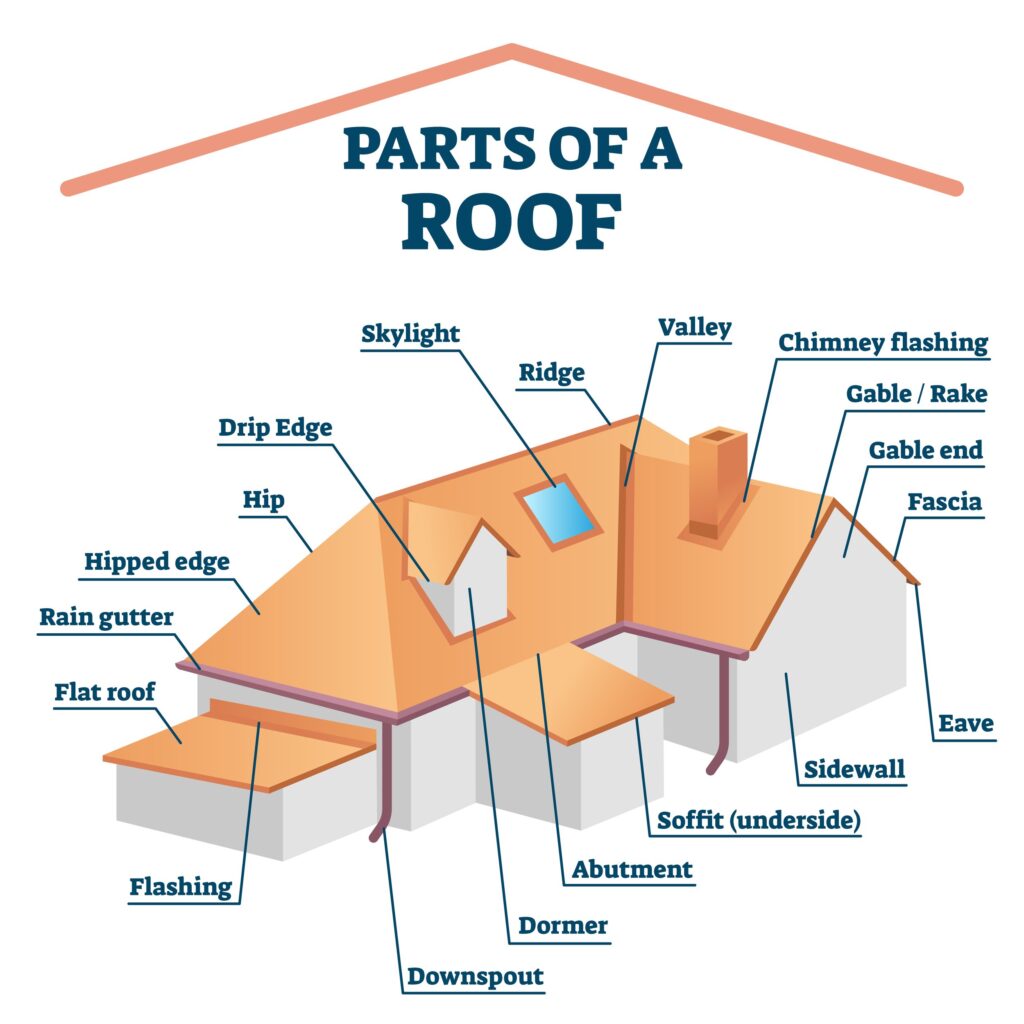Have you ever wondered how to determine if your asphalt shingles are in bad condition? This article aims to shed light on the telltale signs that indicate the health of your asphalt shingles. Whether it’s cracks, curls, or granule loss, understanding these common indicators will help you identify if your roof needs attention and potential repairs. By being aware of the signs, you can ensure the longevity of your asphalt shingles and maintain the overall integrity of your roofing system.
Signs of Bad Asphalt Shingles
When it comes to the roof of your home, you want to ensure that it is in good condition to protect your property from the elements. One of the key components of a roof is the asphalt shingles. However, over time, these shingles can deteriorate and become less effective. To help you identify whether your asphalt shingles are in bad condition, here are some signs to look out for.
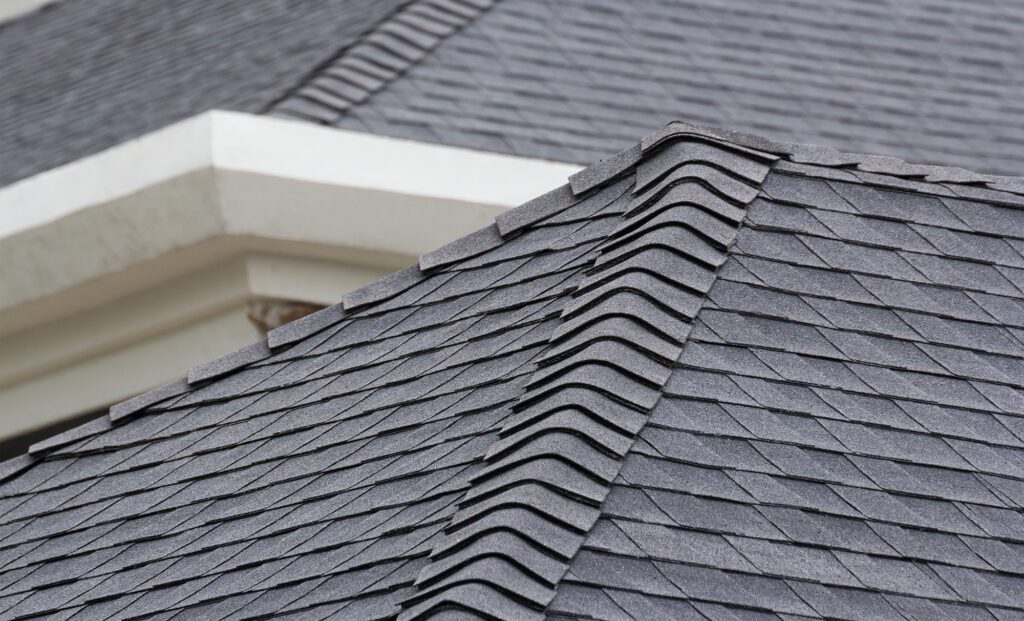

1. Curling or Clawing of Shingles
One of the most noticeable signs of bad asphalt shingles is when they begin to curl or claw. Curling occurs when the edges of the shingles start to lift and become curved, while clawing happens when the edges remain flat, but the middle section starts to rise. These issues can be caused by improper installation, poor ventilation, or old age.
1.1 Causes of Curling or Clawing
Curling or clawing of shingles can be caused by a variety of factors, including improper installation, lack of ventilation in the attic, exposure to extreme temperatures, or poor quality shingles. It is important to address these causes to prevent further damage to your roof.
1.2 Effects of Curling or Clawing
Curling or clawing shingles can leave your roof vulnerable to leaks and damage from moisture. When the edges of the shingles lift, it creates gaps where water can enter, potentially leading to water damage in your attic or interior spaces.
1.3 Actions to Take
If you notice curling or clawing of your asphalt shingles, it is essential to take action promptly. Contact a professional roofing contractor to assess the extent of the damage and determine the necessary repairs or replacement. Ensuring proper ventilation in your attic can also help prevent future issues with curling or clawing shingles.
2. Missing Shingles
Another clear sign of bad asphalt shingles is when you observe missing shingles on your roof. Missing shingles can occur due to severe weather conditions such as strong winds, heavy rain, or hail. It can also be a result of poor installation or aged shingles that have reached the end of their lifespan.
2.1 Causes of Missing Shingles
The primary causes of missing shingles include severe weather events like storms, improper installation, or aged shingles that have weakened over time. Exposure to harsh weather conditions can loosen the roofing materials, causing them to detach from the roof.
2.2 Effects of Missing Shingles
Missing shingles expose your roof to potential water damage and leaks. Without a full coverage of shingles, rainwater can seep into the underlying layers, leading to rotting of the roof deck or damage to the interior of your home.
2.3 Actions to Take
As soon as you notice missing shingles on your roof, it is crucial to address the issue promptly. Contact a professional roofer to assess the damage and recommend the appropriate course of action, which may involve replacing the missing shingles and inspecting the overall condition of your roof.
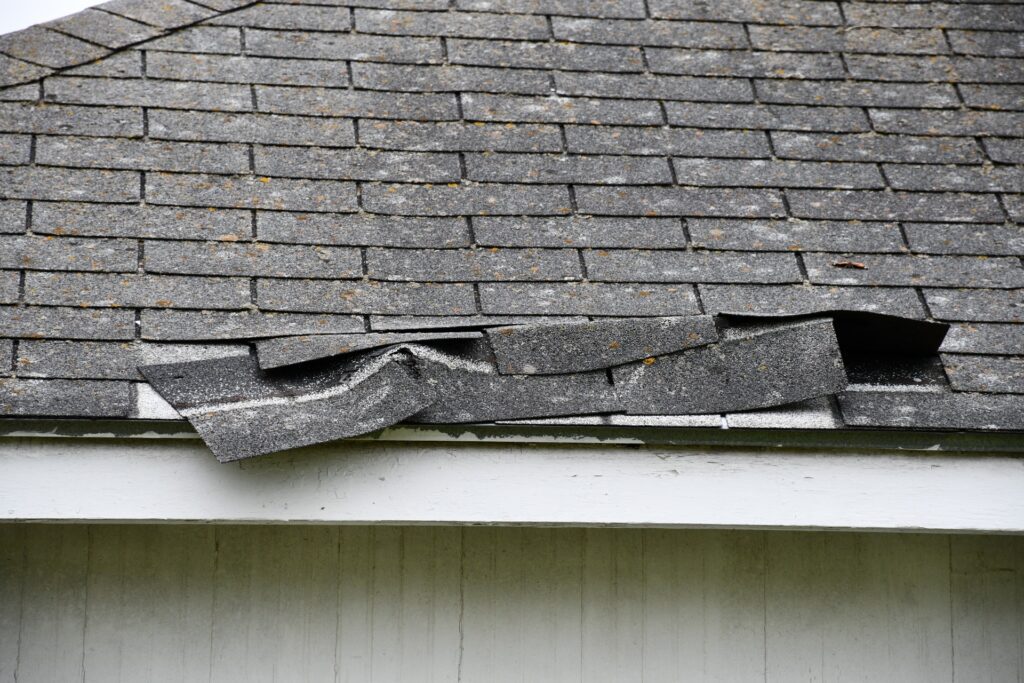

3. Cracked Shingles
Cracked shingles are another sign that your asphalt shingles may be in bad condition. Cracks can occur due to various reasons, including weathering, thermal expansion and contraction, or inadequate maintenance.
3.1 Causes of Cracked Shingles
Cracked shingles can be caused by a combination of factors, such as exposure to extreme temperatures, hail damage, or the use of poor quality shingles. Additionally, excessive foot traffic on the roof or fallen tree branches can also lead to shingle cracks.
3.2 Effects of Cracked Shingles
Cracked shingles compromise the integrity of your roof, allowing water to penetrate and cause damage to the underlying layers. It can also lead to leaks and potential structural issues if not addressed in a timely manner.
3.3 Actions to Take
If you notice cracked shingles on your roof, it is essential to have them inspected by a professional roofer. They can assess the severity of the cracks and determine whether repair or replacement is necessary. Regular roof inspections and maintenance can help identify cracked shingles early on and prevent further damage.
4. Granule Loss
Granule loss is another indication that your asphalt shingles may be in bad condition. Over time, the granules on shingles can wear away due to weathering, foot traffic, or improper installation.
4.1 Causes of Granule Loss
Granule loss can occur due to various factors, including the age of the shingles, exposure to harsh environmental conditions, or poor quality manufacturing. Additionally, poor attic ventilation can lead to increased heat buildup, causing the granules to detach from the shingles.
4.2 Effects of Granule Loss
When asphalt shingles lose their granules, they become more susceptible to damage from UV rays, leading to premature deterioration. Granule loss can also result in the shingles losing their water-resistant properties, allowing water to infiltrate and cause leaks.
4.3 Actions to Take
If you notice significant granule loss on your asphalt shingles, it is advisable to contact a professional roofing contractor. They can assess the condition of the shingles and determine whether repairs or replacement are necessary. Proper attic ventilation and regular maintenance can help minimize granule loss in the future.
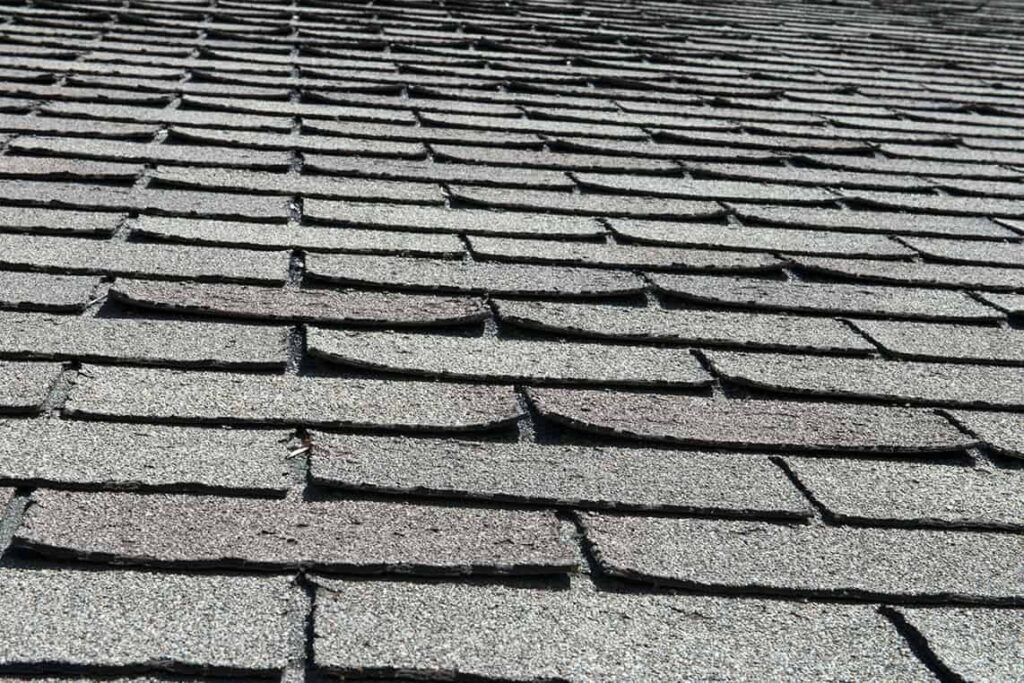

5. Buckling Shingles
Buckling shingles are another sign to watch out for when it comes to identifying bad asphalt shingles. Buckling occurs when the shingles no longer lie flat on the roof surface and appear wavy or uneven.
5.1 Causes of Buckling Shingles
Buckling shingles can be caused by several factors, including improper installation, inadequate ventilation, or excessive moisture in the underlying layers. Poorly installed felt underlayment or the use of wrong-sized nails can also contribute to shingle buckling.
5.2 Effects of Buckling Shingles
Buckling shingles can compromise the overall integrity of your roof, exposing it to potential water damage, leaks, and further deterioration. The uneven surface created by buckling can also become a breeding ground for mold and mildew.
5.3 Actions to Take
If you notice buckling shingles on your roof, it is crucial to consult a professional roofer for an inspection. They can determine the underlying causes and recommend appropriate repairs or replacement. Ensuring proper ventilation and moisture control in the attic can help prevent buckling of shingles.
6. Moss or Algae Growth
The growth of moss or algae on your asphalt shingles is not only unsightly but also an indication of their poor condition. Moss or algae can thrive in moist and shaded areas, potentially leading to damage if left untreated.
6.1 Causes of Moss or Algae Growth
Moss or algae growth on asphalt shingles can be caused by several factors, including excessive moisture retention, lack of sunlight, or the presence of organic debris, such as leaves or branches, on the roof. Poor attic ventilation can contribute to moisture buildup, creating a favorable environment for moss or algae to grow.
6.2 Effects of Moss or Algae Growth
Moss or algae growth can damage the asphalt shingles, causing them to deteriorate at a faster rate. The growth of moss or algae can also trap moisture, leading to rotting of the underlying layers and potential structural damage.
6.3 Actions to Take
If you notice moss or algae growth on your asphalt shingles, it is important to address the issue promptly. Consult a professional roofing contractor who can safely remove the moss or algae and provide recommendations to prevent its recurrence. Improving attic ventilation and regularly cleaning debris from your roof can help control moss or algae growth.
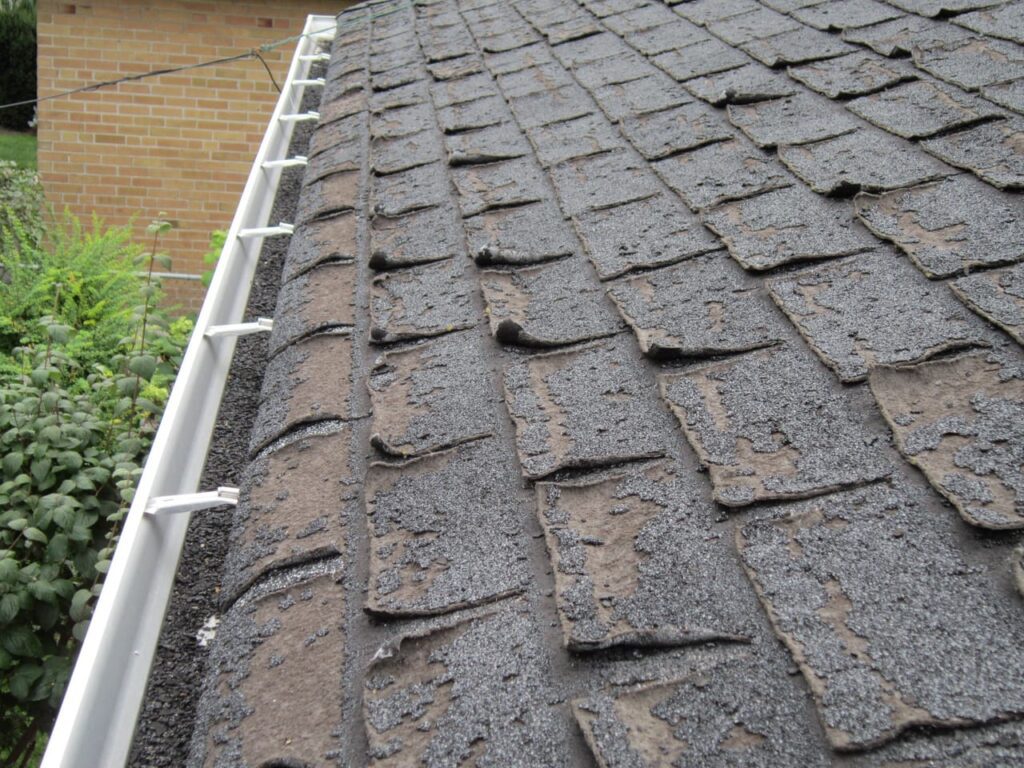

7. Shingle Aging
Asphalt shingles have a limited lifespan, and over time, they will naturally age. It is important to keep an eye out for signs of shingle aging to determine if they require repair or replacement.
7.1 Signs of Shingle Aging
Signs of shingle aging include discoloration, loss of granules, curling or clawing, and cracking. Additionally, if your asphalt shingles have reached their warranty period or are approaching the end of their expected lifespan, it may be time to consider replacement.
7.2 Effects of Shingle Aging
Aged asphalt shingles become less effective at protecting your roof and home from the elements. They are more prone to leaks, damage from UV rays, and other environmental factors. Neglecting to address shingle aging can lead to more significant issues and potentially costly repairs down the line.
7.3 Actions to Take
If you notice signs of shingle aging, it is advisable to consult a professional roofer to assess the condition of your roof. They can provide recommendations on whether repair or replacement is necessary based on the extent of the aging. Regular inspections and maintenance can help prolong the lifespan of your asphalt shingles.
8. Leaks or Water Damage
Leaks or water damage are clear indicators that your asphalt shingles are in poor condition and need attention. Water infiltration can lead to a range of issues, including structural damage, mold growth, and compromised insulation.
8.1 Signs of Leaks or Water Damage
Signs of leaks or water damage include water stains on the ceiling or walls, peeling paint or wallpaper, dampness or mold growth in the attic, or visible water dripping from the roof. It is important to address these signs promptly to minimize further damage.
8.2 Effects of Leaks or Water Damage
Leaks or water damage can result in structural deterioration, compromised insulation, mold growth, and damage to your home’s interior. If left unattended, these issues can lead to costly repairs and potentially pose health risks to you and your family.
8.3 Actions to Take
If you detect signs of leaks or water damage, it is crucial to act quickly. Contact a professional roofing contractor to locate and repair the source of the leak. They can inspect the condition of your asphalt shingles and address any underlying issues that may have contributed to the water damage.


10. High Energy Bills
While it may not be a direct indicator of bad asphalt shingles, consistently high energy bills can be a sign that your roof is not functioning efficiently. Poorly insulated or damaged shingles can lead to energy loss, causing your home’s heating and cooling systems to work harder than necessary.
10.1 Causes of High Energy Bills
High energy bills can be caused by inadequate insulation, air leaks, or inefficient roofing materials. Damaged or aged asphalt shingles can contribute to energy loss, as they fail to provide proper insulation and protection against external temperature changes.
10.2 Effects of High Energy Bills
Consistently high energy bills indicate wasted energy and can significantly impact your household budget. Additionally, inefficient roofing can lead to discomfort inside your home due to uneven temperature distribution or difficulty maintaining a consistent indoor climate.
10.3 Actions to Take
If you notice persistently high energy bills, it is advisable to consult a professional energy auditor or roofing contractor. They can assess the insulation and condition of your roof and recommend improvements that can help reduce energy consumption and enhance the efficiency of your home’s heating and cooling systems.
In conclusion, being able to identify signs of bad asphalt shingles is crucial to maintaining the integrity of your roof and protecting your home. Pay attention to curling or clawing, missing shingles, cracks, granule loss, buckling, moss or algae growth, shingle aging, leaks or water damage, and high energy bills. By addressing these issues promptly and seeking professional assistance when necessary, you can ensure the longevity and effectiveness of your asphalt shingles.


